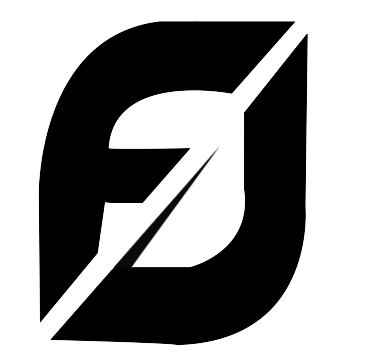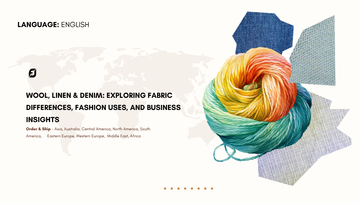Fashion is more than clothing—it is culture, tradition, environment, and expression woven together. Every continent, every country, and every community carries its own apparel lifestyle. From festive outfits in India to everyday casuals in Europe, what people wear depends on climate, heritage, festivals, and even special occasions.
Yet, there is one undeniable truth: every garment begins with fabric. Designers, exporters, suppliers, wholesalers, manufacturers, and boutiques all revolve around the same foundation—the quality of fabric.
In this article, we’ll explore the differences between three important fabrics—Wool, Linen, and Denim—their uses across the world, the challenges of sourcing premium-quality materials, and how businesses can avoid common mistakes in the fabric supply chain. We’ll also discover solutions, including where to buy plain, embroidered, and designer fabrics in both bulk and exclusive options.
Understanding the Fabric Differences
Wool:
Wool is a natural fiber obtained mainly from sheep but also from alpacas, goats (cashmere, mohair), and even camels. It is warm, soft, moisture-wicking, and ideal for colder regions. Wool has a natural elasticity that makes it comfortable for outerwear and formal wear.
Occasions & Outfits:
-
Business suits and formal coats
-
Winter jackets, sweaters, and shawls
-
Traditional wear in colder climates (e.g., Kashmiri Pashmina, Scottish kilts)
-
Luxury designer pieces for runway fashion
Linen:
Linen is one of the oldest textiles in human history, made from the flax plant. Known for its breathable texture, it’s lightweight, moisture-absorbent, and perfect for tropical and summer climates.
Occasions & Outfits:
-
Summer dresses, resort wear, casual shirts
-
Ethnic kurtas and sarees (India, Southeast Asia)
-
Relaxed formal wear in hot countries (linen blazers & trousers)
-
Home textiles: tablecloths, curtains, bedsheets
Denim:
Denim is a rugged cotton twill fabric, most famously used for jeans. Originally developed as workwear, it is now a global fashion staple across all demographics.
Occasions & Outfits:
-
Casual wear: jeans, jackets, skirts, shorts
-
Semi-formal wear with designer denim blazers
-
Streetwear and luxury fusion fashion (distressed jeans, embroidered denim)
-
Global acceptance: Denim is worn everywhere from New York to New Delhi
Global vs. Local Demand
While wool, linen, and denim are globally recognized, their demand patterns vary:
-
Wool: Higher demand in colder regions (Europe, North America, Northern India, China). Lower demand in tropical countries except for luxury winter fashion.
-
Linen: Extremely popular in hot and humid climates (India, Southeast Asia, Africa, Mediterranean countries). Considered premium in Western luxury fashion.
-
Denim: Universally loved and accepted, regardless of climate or culture. Jeans are one of the world’s highest-selling garments.
The Fabric Sourcing Challenges
Every designer or business, whether a small boutique or a large garment manufacturer, faces similar problems when sourcing fabrics:
-
Quality Inconsistency – Suppliers may send one quality in samples and another in bulk.
-
Overloaded Marketplaces – Platforms like Alibaba, Indiamart, TradeIndia, Amazon, and Etsy list thousands of suppliers. It’s nearly impossible to identify who is genuine.
-
Cheap vs. Premium Confusion – Many traders mix low-cost polyester blends and sell them as silk, linen, or wool.
-
Logistics Issues – Late deliveries, damaged goods, or incomplete orders frustrate buyers.
-
Customization Limitations – Most bulk suppliers refuse small customization requests like unique embroidery or specific color shades.
-
Lack of Trust – Millions of customers worry: “Am I really buying the same fabric I ordered?”
This is why so many designers—whether it’s Manish Malhotra, Anita Dongre, Ritu Kumar, Rohit Bal, or even international names like Giorgio Armani, Dior, and Versace—do not produce fabrics themselves. They design, innovate, and create samples. But for actual fabric sourcing, they rely on trusted manufacturers and suppliers.
The Solution: Choosing Trusted Fabric Manufacturers
When it comes to overcoming sourcing problems, one solution stands out: work with established, transparent manufacturers.
Example: Madhav Fashion & FabricDiary.com
Madhav Fashion, one of Asia’s largest and most trusted fabric manufacturers, provides an answer to the sourcing challenges:
-
Wide Range: From plain to embroidered to designer printed fabrics, everything is available under one roof.
-
Quality First: The company insists on buyers ordering a sample first to check quality and service.
-
Bulk & Small Orders: Whether you need exclusive designer samples or bulk orders worth lakhs of tonnes for garment factories, both are supported.
-
Online & Offline Access: If you cannot visit the factory, you can explore thousands of fabric designs online at FabricDiary.com.
This system eliminates middlemen, reduces quality inconsistency, and gives designers and businesses direct access to the source.
Where to Buy Fabrics
Here’s a breakdown depending on the type of fabric you need:
-
Plain Fabrics (online & offline): FabricDiary.com, local textile hubs (Surat, Ahmedabad, Tirupur, Milan, Istanbul).
-
Designer Embroidered Fabrics: Madhav Fashion, luxury textile stores, Surat & Delhi wholesale markets.
-
Designer Printed Fabrics: Digital & screen-printed fabrics from FabricDiary.com or specialized mills.
-
Customized Fabrics: Directly from manufacturers who accept “made-to-order” production. Designers can get specific patterns, dyeing, or embroidery.
-
Bulk Quantity (for industries): Large garment manufacturing units typically source directly from mills like Madhav Fashion instead of relying on multiple small traders.
Industry Insights & Tips for Businesses
-
Tip 1: Always Request Samples – Never finalize bulk orders without checking quality in hand.
-
Tip 2: Verify Certifications – Look for OEKO-TEX, GOTS, or other certifications if sustainability matters.
-
Tip 3: Diversify Suppliers – Don’t depend on a single vendor; have backups.
-
Tip 4: Focus on Storytelling – Customers love knowing where the fabric came from (e.g., “handwoven linen from Bengal”).
-
Tip 5: Build Long-Term Relationships – Consistency and trust come only when you work with the same manufacturer repeatedly.
A Story from the Industry
A boutique designer in Mumbai once ordered “pure silk embroidered fabric” from an online marketplace. The samples looked stunning, but when the bulk arrived, it was polyester. Customers complained, and the brand suffered losses.
When she switched to sourcing from a direct manufacturer (Madhav Fashion), she not only received authentic silk but also customized embroidery that matched her brand’s vision. Within one year, her boutique doubled sales.
This is a story repeated across thousands of fashion entrepreneurs. Fabric quality builds or destroys a brand.
Fashion designers across the world—from Manish Malhotra to Coco Chanel, Ritu Kumar to Dior—all share a common truth: their art starts with high-quality fabric.
-
Wool brings warmth and luxury.
-
Linen brings comfort and freshness.
-
Denim brings versatility and universality.
But without trustworthy fabric sourcing, even the best design remains incomplete.
For businesses, the path forward is clear:
-
Work with reliable manufacturers like Madhav Fashion.
-
Explore online platforms such as FabricDiary.com for variety and convenience.
-
Always test samples before bulk buying.
When you get fabric right, your garments don’t just sell—they tell a story.
______________________________________________________________
FAQ
Q1: What is the main difference between wool, linen, and denim?
A: Wool is warm and ideal for winter wear, linen is breathable for hot climates, and denim is durable cotton twill used worldwide for casual and semi-formal outfits.
Q2: Which fabric is best for summer clothing?
A: Linen is the most suitable for summer due to its lightweight, breathable, and moisture-absorbing properties.
Q3: Is denim considered formal or casual?
A: Denim is mostly casual but with modern designs, it can be styled into semi-formal and even luxury fashion.
Q4: Why is wool more expensive than other fabrics?
A: Wool is costlier because it is a natural fiber, requires careful shearing and processing, and has high durability with premium warmth.
Q5: Where can I buy premium embroidered or printed fabrics online?
A: You can explore FabricDiary.com and Madhav Fashion, which offer plain, embroidered, and designer printed fabrics with bulk and custom options.
Q6: Why do businesses face issues sourcing fabrics from Alibaba or Indiamart?
A: Because of inconsistent quality, unreliable sellers, and difficulty identifying genuine manufacturers among thousands of traders.
Q7: Can I get customized fabric designs in bulk?
A: Yes, trusted manufacturers like Madhav Fashion provide custom printing, embroidery, and dyeing options for both small designers and large garment industries.
Explore Our Extensive Embroidery Fabric Collections
Browse designer, wholesale, and bulk embroidery fabrics across textures, styles, and trends—perfect for every creative project:






